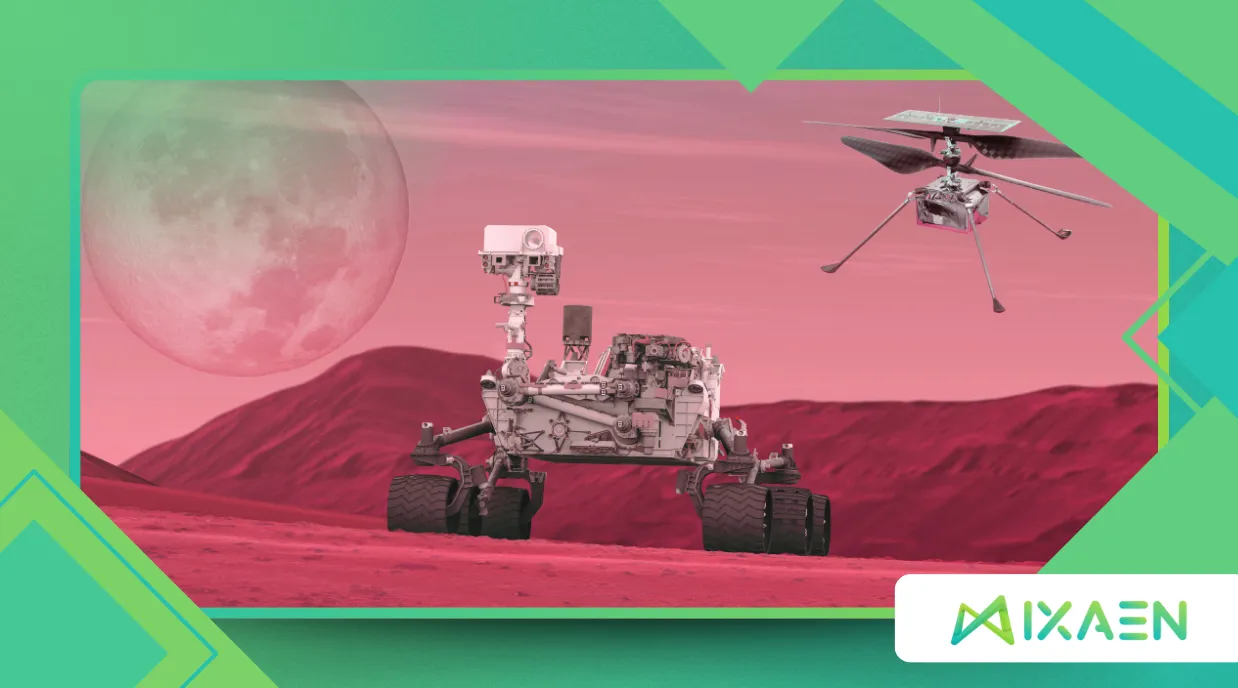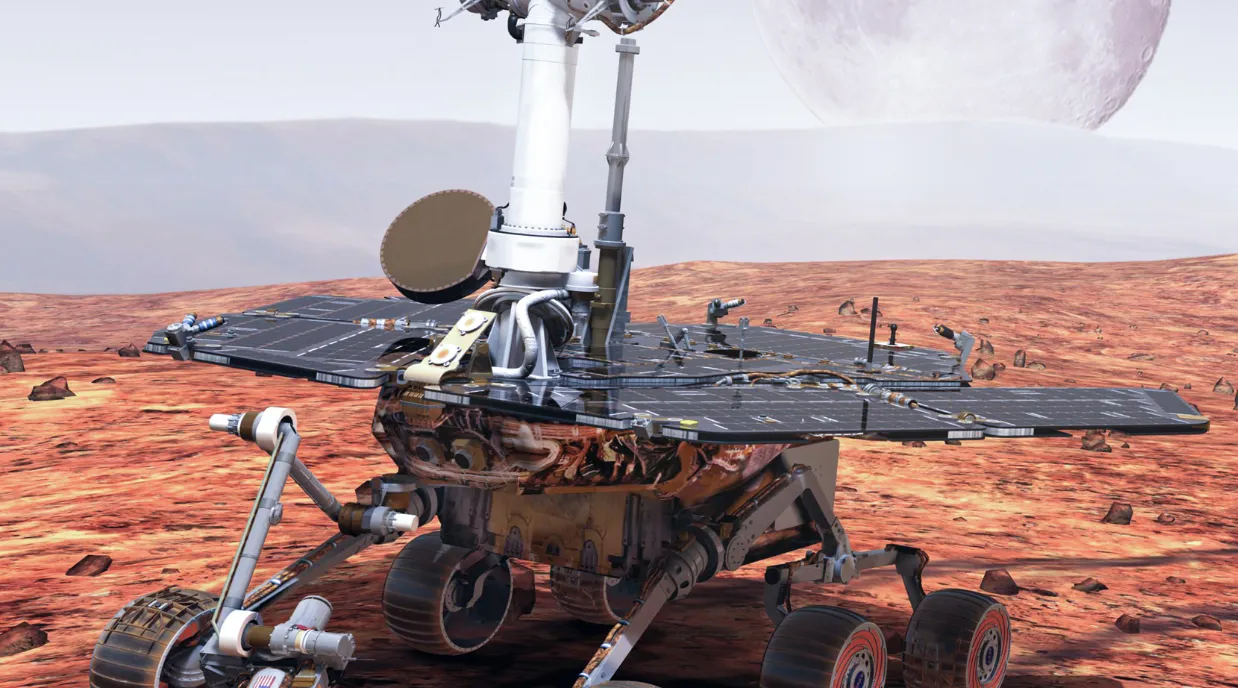Mars Rovers: How Many Are There and What Are They Doing?

Since the first successful landing on the Red Planet in 1997, Mars rovers have become humanity’s eyes, hands, and tools on a world millions of miles away.
Anúncios
These robotic explorers have transformed our understanding of Mars, uncovering secrets about its geology, climate, and potential for past or present life.
But how many of these rovers are currently active, and what exactly are they doing to advance our knowledge of the fourth planet from the Sun?
Let’s dive into the fascinating world of Mars exploration and uncover the missions shaping our interplanetary future.
A Brief History of Mars Rovers: From Sojourner to Perseverance
The journey of Mars rovers began with NASA’s Sojourner, a small but mighty robot that landed as part of the Pathfinder mission in 1997.
Weighing just 23 pounds, Sojourner proved that mobility on Mars was possible, paving the way for more advanced missions.
Since then, a total of six rovers have successfully operated on the Martian surface, each building on the legacy of its predecessors.
Today, only two rovers remain active: NASA’s Curiosity and Perseverance.
These robotic explorers are equipped with cutting-edge technology, from high-resolution cameras to advanced drilling systems, enabling them to conduct groundbreaking science.
But what sets them apart, and how are they contributing to our quest to understand Mars?
The history of these rovers is not just about their technical achievements but also about the people and teams behind them.
Engineers, scientists, and researchers have dedicated years of their lives to designing and executing these missions, often facing numerous challenges along the way.
For a deeper look into the history of Mars exploration, visit NASA’s Mars Exploration Program.
Active Mars Rovers: What Are They Up To?
1. Curiosity: The Veteran Explorer
Since its landing in 2012, Curiosity has been a workhorse on Mars, traversing the rugged terrain of Gale Crater.
Its primary mission is to determine whether Mars ever had the right conditions to support microbial life.
Equipped with a suite of scientific instruments, including a laser spectrometer and a weather station, Curiosity has made several groundbreaking discoveries.
For instance, it found evidence of ancient lake beds and organic molecules, suggesting that Mars once had liquid water and the building blocks of life.
Today, Curiosity continues to climb Mount Sharp, a 5-mile-high mountain within Gale Crater, analyzing rock layers to uncover the planet’s climatic history.
Additionally, Curiosity has been instrumental in studying the Martian atmosphere and its seasonal changes, providing insights into weather patterns that could affect future missions.
The rover’s findings have also sparked discussions about the planet’s potential for habitability, leading to new hypotheses and research directions.
+ Space Exploration: Future Missions to Mars
2. Perseverance: The Next-Generation Rover
NASA’s Perseverance rover, which landed in February 2021, represents the next leap in Martian exploration.
Located in Jezero Crater, a site believed to have once been a river delta, Perseverance is tasked with searching for signs of ancient microbial life and collecting samples for future return to Earth.
One of its most exciting features is the Ingenuity helicopter, a small drone that has completed over 50 flights, demonstrating the potential for aerial exploration on Mars.
Perseverance is also testing technologies for future human missions, such as producing oxygen from the Martian atmosphere using the MOXIE instrument.
Moreover, Perseverance is equipped with advanced imaging systems that allow it to capture high-resolution images of the Martian surface, aiding in the identification of interesting geological features.
The rover’s mission is not only about exploration but also about preparing for human exploration, making it a critical component of NASA’s long-term plans for Mars.

What Happened to the Other Mars Rovers?
While Curiosity and Perseverance are still operational, earlier rovers have completed their missions.
Spirit and Opportunity, part of NASA’s Mars Exploration Rover program, landed in 2004 and far exceeded their expected lifespans.
Spirit became stuck in soft soil in 2009 and ceased communications in 2010, while Opportunity continued exploring until a global dust storm in 2018 ended its mission.
The Sojourner rover, though groundbreaking, operated for only 83 Martian days.
Despite their retirement, these rovers laid the foundation for the advanced missions we see today.
The legacy of these earlier missions continues to influence current and future exploration strategies.
Data collected by Spirit and Opportunity has provided invaluable insights into Martian geology and climate, shaping our understanding of the planet’s history.
Additionally, the experiences gained from these missions have informed the design and operation of newer rovers, ensuring that lessons learned are applied to enhance mission success.
The Science Behind Mars Rovers: Tools and Discoveries
Mars rovers are equipped with an array of scientific instruments designed to analyze the planet’s surface and atmosphere.
For example, Curiosity’s Sample Analysis at Mars (SAM) suite can detect organic compounds, while Perseverance’s PIXL instrument maps the chemical composition of rocks at a microscopic level.
These tools have led to remarkable discoveries.
In 2018, Curiosity detected seasonal variations in methane levels, a gas often associated with biological activity.
Meanwhile, Perseverance has identified igneous rocks in Jezero Crater, providing clues about Mars’ volcanic past.
The scientific findings from these rovers have profound implications for our understanding of Mars as a potentially habitable planet.
Each discovery leads to new questions and research avenues, driving the scientific community to explore further.
Moreover, the data collected by these rovers is shared globally, allowing scientists from various countries to collaborate and build on each other’s work.
The Future of Mars Rovers: What’s Next?
The success of current Mars rovers has inspired ambitious plans for the future.
NASA and the European Space Agency (ESA) are collaborating on the Mars Sample Return mission, which aims to bring samples collected by Perseverance back to Earth by the early 2030s.
Additionally, China’s Zhurong rover, part of the Tianwen-1 mission, has been exploring Mars since 2021, marking a significant step in international Mars exploration.
Private companies like SpaceX are also eyeing Mars, with plans to send humans to the planet within the next decade.
These efforts could revolutionize our understanding of Mars and pave the way for human colonization.
As technology advances, the next generation of Mars rovers may include even more sophisticated instruments, enhancing our ability to study the planet’s surface and atmosphere.
Future missions might also focus on in-situ resource utilization, allowing astronauts to use Martian materials for life support and fuel.
The collaboration between government agencies and private companies is likely to accelerate the pace of exploration, making Mars more accessible than ever before.

Why Mars Rovers Matter: The Bigger Picture
Mars rovers are more than just robotic explorers; they are symbols of human ingenuity and curiosity.
By studying Mars, we gain insights into planetary evolution, climate change, and the potential for life beyond Earth.
These missions also test technologies that could one day support human exploration, making them a critical step toward becoming a multi-planetary species.
As NASA scientist Dr. Ashwin Vasavada once said, “Mars is a time machine. It preserves the history of the solar system in a way that Earth no longer does.”
Through the tireless work of Mars rovers, we are unlocking the secrets of this ancient world, one discovery at a time.
The importance of Mars exploration extends beyond scientific discovery; it inspires generations to pursue careers in science, technology, engineering, and mathematics (STEM).
The stories of these rovers captivate the public imagination, fostering a sense of wonder about the universe and our place within it.
Moreover, the technologies developed for Mars missions often find applications on Earth, contributing to advancements in various fields, including robotics, communication, and environmental monitoring.
++ Asteroid Deflection Strategies: Protecting Earth from Impacts
Tables: Key Facts About Mars Rovers
| Rover Name | Mission Duration | Key Discoveries |
|---|---|---|
| Sojourner | 1997 | Proved mobility on Mars |
| Spirit | 2004-2010 | Found evidence of past water activity |
| Opportunity | 2004-2018 | Identified clay minerals indicating water |
| Curiosity | 2012-Present | Detected organic molecules and methane |
| Perseverance | 2021-Present | Collecting samples for future return |
| Rover | Location | Primary Mission |
|---|---|---|
| Curiosity | Gale Crater | Study Martian climate and geology |
| Perseverance | Jezero Crater | Search for signs of ancient life |
Conclusion: The Legacy of Mars Rovers
From Sojourner to Perseverance, Mars rovers have revolutionized our understanding of the Red Planet.
These robotic explorers have not only answered fundamental questions about Mars but also inspired generations to dream of interplanetary exploration.
As we look to the future, the discoveries made by these rovers will continue to shape our journey toward becoming a spacefaring civilization.
The story of Mars rovers is far from over—it’s just beginning.
In the coming years, as we prepare for human missions to Mars, the groundwork laid by these rovers will be crucial.
Their findings will guide astronauts as they explore the Martian surface, search for resources, and potentially establish a human presence on the planet.
The legacy of Mars rovers is a testament to human curiosity and determination, reminding us that the universe is ours to explore.
